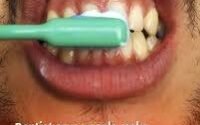Aging is both beautiful and a privilege. Though we often complain about old age and the things that come along with it, the reality is that many of us are not so lucky as to reach an age in which they can complain of these things. That being said, there is a difference between fighting our age and stressing over it and doing things so that as we age, we do so in a way that maintains our health and vitality. Our skin is a major part of that. One of the most common grievances with aging skin, that cause many people to feel rather self conscious, are what we call age spots. Thankfully, there are plenty of ways to both prevent and treat these spots so that you can feel confident in your skin and maintain the health of your skin long into old age.
What Are Age Spots?

Also known as liver spots, sun spots, or solar lentigines, these are darker spots that appear on the skin as we age. They are more commonly seen in adults over the age of 50 but also can appear in younger people who have had a lot of exposure to the sun. Age spots are not necessarily dangerous to your health and can be treated cosmetically. That being said, if you have a lot of these liver spots, it can make it harder to identify spots that could potentially be life-threatening, such as melanoma spots. Thankfully, the same thing that generally causes age spots is the same that causes skin cancer, and the route to prevention of both of these conditions is more or less the same.
Why Are They Sometimes Called ‘Liver Spots’?

Age spots are sometimes referred to as liver spots. This is due to a historical belief that they were caused by liver problems. However, the term “liver spot” is somewhat of a misnomer, as we now know that age spots are not related to liver function or liver disease. The association likely originated from a misunderstanding of the actual cause of these skin blemishes, which is sun exposure rather than liver health. Age spots are primarily caused by years of cumulative sun exposure, leading to the localized overproduction of melanin in the skin. As a result, the more accurate term “age spot” or ‘sun spot’ is often preferred in dermatology to describe these pigmented skin lesions.
Causes of Age Spots

These hyperpigmented spots that develop do so as a response to high exposure to UV light, aka sunshine. They are essentially overactive pigment cells reacting to sun exposure, purposely darkening your skin in order to protect you from too much sun. They are most common in people with lighter skin colors and are most often seen in areas that experience more sun exposure. These include the shoulders, neck, face, hands, and perhaps the arms and legs. A phenomenon called Melanin clumping, or high concentrations of melanin, also contributes to age spots. Again, this is often in response to sun exposure. Sun isn’t the only culprit, however. The use of tanning lamps and tanning beds, which also use UV light, can cause sun spots. Your history of sun exposure and sunburn can have a big impact on how many age spots you develop, their size, and their color. As already mentioned, this exact same thing is what can cause melanoma, or skin cancer, to develop. This is why preventing age spots is important: Not necessarily so you age ‘well’, as society would put it, but so that you protect yourself from one of the world’s deadliest, yet most preventable, cancers.
Symptoms and Diagnosis

Age spots generally appear as flat, oval-shaped areas of increased pigmentation. The color can range from tan to dark brown. They also range from small, freckle-sized spots to much larger. They can also eventually clump together. Unlike freckles, they do not fade over periods of less UV exposure. While sun spots are not dangerous to your health, it is important to be able to tell the difference between harmless liver spots and potential cancerous growths. Spots that are very dark or black in color could be potentially cancerous. This also goes for any that have changed in appearance, whether that be size, shape, color, or texture. Spots that have unusual coloring, ragged edges, or are bleeding, should all be checked out by a medical professional. Anytime you notice changes in your skin you should speak to your doctor or dermatologist.
Treatments for Age Spots

As already mentioned, age spots are not dangerous and don’t require treatment. If you don’t like the way they look, however, there are things you can do to improve their appearance. They can either be removed or lightened for cosmetic reasons relatively easily. All cosmetic treatments, however, should be done with a skilled, licensed dermatologist. This will usually involve an initial consultation where you will discuss with them the needs of your skin and they will help you to come up with an action plan that is safe, effective, and realistic. Cosmetic treatments for age spots include:
Chemical peels

Chemical peels are a cosmetic procedure commonly used to improve the appearance of age spots and other skin irregularities. During a chemical peel, a chemical solution is applied to the skin, which causes the top layers to shed or peel off. This reveals the smoother, less pigmented skin underneath. The chemical solution used in the peel can vary in strength, with superficial peels targeting mild discoloration and deeper peels penetrating more deeply to address more severe pigmentation issues like age spots. Chemical peels help to fade sun spots, reduce pigmentation, and improve skin tone and texture by promoting skin cell turnover and stimulating collagen production. Again, this is a procedure that should be done by a licensed dermatologist.

